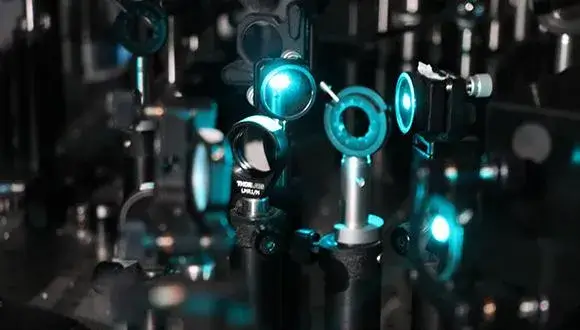The discovery may be used as a breakthrough tool in the worlds of solar energy production, information processing and the like

Photons are light particles that move freely and at an enormous speed of 300,000 km per second. According to quantum theory, matter can be "mixed" with photons by using artificial structures and creating a hybrid creature called a "polariton". About a decade ago it was discovered that polaritons can be used to control the properties of materials and chemical processes.
A new study at Tel Aviv University created an ultra-fast imaging system through which they were able to predict the behavior of particles called "polaritons" - particles that are created from the "mixing" of light and matter. For the first time, they were able to screen these materials and understand their special behavior: the more "light" they contain, the faster and more efficient they are.
The research was conducted under the leadership of Dr. Tal Schwartz, head of the Laboratory for Molecular Nanooptics Research, and Dr. Bala Mukondakumar in the Department of Physical Chemistry at the Faculty of Exact Sciences by Raymond and Burley Sackler, and was published in the prestigious newspaper "Nature Materials". Students Aryeh Simhovich and Gal Sandik, Dr. Adina Golombek and Dr. Guy Ankonina participated in the study.
The researchers developed a unique optical system in order to investigate whether mixing with light can be used to increase electronic conduction processes in materials, and discovered an interesting feature: the higher the percentage of light in a polariton, the more efficient and orderly its movement in space becomes, but because it still has character. Materials", it can be used for electronic processes in various devices.
Film the image as in the video
Dr. Schwartz explains: "In the system we built, there is a surface that captures photons and a layer of molecules on it. When a laser beam is fired at a surface, the same polaritons can be created at a specific point and their movement on the surface can be observed. Until now, researchers have statically photographed what was happening, so they could say there was movement on the surface but they had no additional information about how or how fast the movement was. In our research, we developed a special optical system that allowed us to observe the movement dynamically and create a kind of video at a very fast pace. For the sake of comparison, a normal video camera sees 30 images per second, and we have more than a million square images per second. Through this, we were able to directly measure the speed of progress of the polaritons, as well as identify for the first time a transition between two different types of motion: when a polariton contains a little light, its range of motion is indeed increased by several orders of magnitude compared to the natural state in the material, but it moves in a manner known as 'diffusive motion' , that is, a movement accompanied by random dispersions leading to frequent changes in the direction of progress, therefore the effectiveness of the movement is limited.
"On the other hand, when the polariton contains a high amount of light, it manages to "overcome" those dispersions, so that a movement known as 'ballistic movement' appears - an ordered movement at a constant speed, which reaches 2/3 of the speed of light. The integrated nature of the polaritons allows, on the one hand, high speed and the passage of long distances a million times the molecular distance scale, while losing less energy, and on the other hand, electronic interactions that allow the control and conversion of light into the energy stored in the material."
Make optimal use of solar energy
"We expect an impact in various fields, for example in the field of solar cells. There, solar energy is absorbed in one area of the device and then has to move to another area where it is converted into electrical energy. Usually this process is slow and limited in the range over which it occurs, which impairs the efficiency of the solar cell. Using polaritons it will be possible to transfer the energy more efficiently and utilize the solar energy optimally. Another example is electro-optical devices which are used for optical communication and information processing. Using polaritons can speed up work rates and significantly lower the resistance of the materials used in these devices, so that we will have to invest less energy in operating them."
More of the topic in Hayadan:
